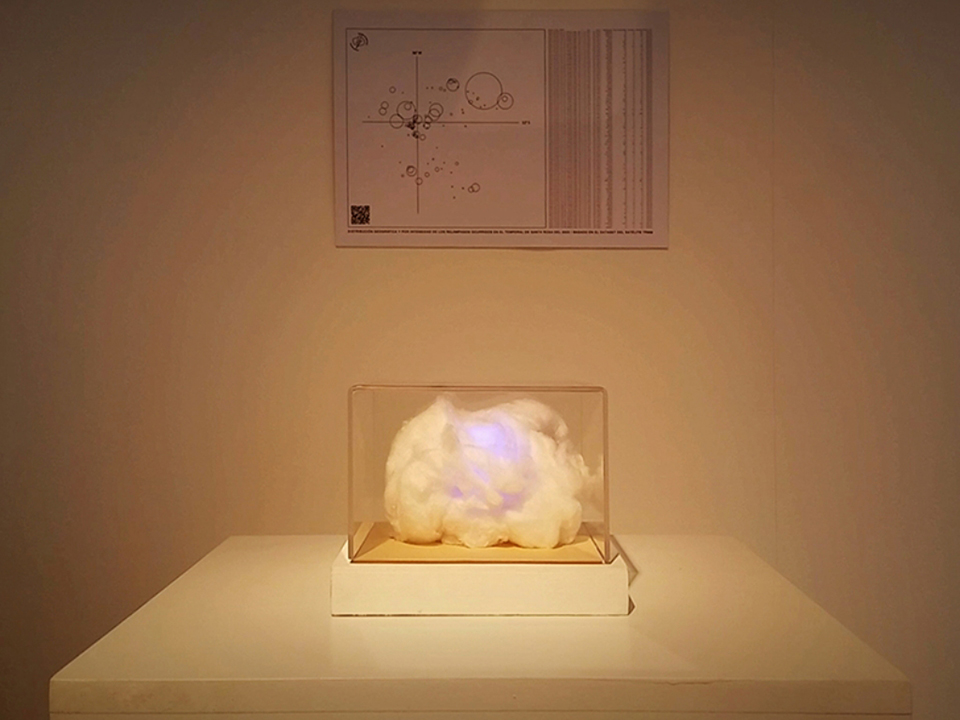Media and Affective Cartographies: Sonic Traditions/Translations
According to Alessandro Ludovico, South American artists involved in hybrid practices between art and hybrid new media practices, notably net artists, reveal a background of isolation, of solitude even within the online universe: “they seem to act almost like aliens, connected to each other but dispersed over a vast continent” (Ludovico 2005). Net art pioneer and sound artist Brian Mackern, based in Uruguay, is a key example. As one of the protagonists of a disseminated and decentralized scene, he experimented exclusively within the digital space at the beginning of the nineties. Over the years, this scene has developed increasingly cohesive connections, creating real micro-communities across the South American continent. Sound artists who use new technologies within contemporary art practices are particularly evident in this group.[4] Their practices benefit from a decentralized model that optimizes local networks and resources within a fluid, globalizing context. Artists – “fractalized on this continent, as […] usually happens to other things here” – have in any case “a kind of 'own voice'” (Ludovico 2005). In so many of these projects scattered across the continent’s vastness, an inseparable bond emerges with the territory. At times they assume the contours of a re-semantization of ancient local symbols, beyond stereotyping, as in Mackern’s counter-definition of noise data in 34s56w.org. Based on the Santa Rosa of Lima religious ceremony in the Rio della Plata region (forming part of the border between Argentina and Uruguay), this sound work consists of a series of electrical interference or radio frequency recordings caused by the Santa Rosa storm’s presence or proximity. At the end of August, when the saint is commemorated, a nearly ubiquitous storm occurs in the area; therefore, the ceremony is associated with rain, atmospheric disturbances, and the electrical activity that follows.[5]
The stormbox is a prototype that reads data of the 2005 Santa Rosa storm taken from a satellite (photo Brian Mackern)
Mackern generates a “religious psychogeography” (Ludovico) built through a fragmented and ironic narration. Noise generated from marginal and residual elements of the local community’s everyday life is converted into a sacred sign reflecting the saint’s absence-presence.[6] The artwork acts as a translation and re-signification of the community’s religious and traditional symbols. In the artist’s vision, sound is configured as a powerful tool in the post-digital space (Chattopadhyay 2014). Boundaries between real and virtual space dissolve throughout Mackern’s practice: from 2000 onwards, his series of soundtoys[7] have allowed him not only to experiment with digital sound’s compositional spatialization but also to fix “physical” relationships through his network with other artists. As Mackern describes: “I like to see the development phases of sound toys as fossils of moments in a network […] as small crystallized stones, as dormant elements that can be activated in network and relationship processes among the people involved in the network.”[8] In this sense, the noise and the work’s visual aspect represent powerful elements exploring territorial decentralization dynamics. The two levels are strongly interrelated, as identified during the sound composition’s research phase: Mackern writes scores that are real diagrams and molecular views, using a data visualization and drawing process that interrelates components taken from a series of locations, maps, and cartographies.
The entire project is built on a thickening and nonlinear stratification utilizing registration, remediation, remodeling, and remixing practices. In 2002, at the height of Uruguay’s harshest financial crisis, Mackern decided to begin dealing with “the storm,” approaching the theme through existing maps. In the work, urban space is made manifest as a real interface, the transposition and displacement of information represented in digital and hybrid (analog-digital) environments, the interference between memory and perceptive experience. These elements allow the artist to deal with themes such as memory and the serialization and obsessive collection of objects specifically linked to religious experience. Between 20 August and 8 September 2002, Mackern made recordings in Montevideo in which the sound waves and radioelectric interference generated by the storm were intercepted as communication signals and captured at different radio-frequencies at sea. The artist repeated this process in subsequent years during the two weeks preceding the event itself, and the two following the atmospheric event. In addition to the recordings, he simultaneously monitored satellite climate maps. The resultant audiovisual database was incorporated into a series of artistic interventions using different modalities, media, materials, times, and places: limited edition CD-Rs; “ritual” objects designed, produced, and distributed locally; audiovisual performances; gallery and museum installations at different Latin American locations; hybrid and analog sound toys; and radiotelegraphy interventions.
Sound, fundamental throughout the entire project, is a viral element. It infiltrates the two-dimensionality of maps to offer otherwise hidden perceptual layers. The work probes the invisibility of signs: the hidden presence of religious and traditional community symbols, and the atmospheric event that is transduced into a narrative through interference, transmission, and electricity. Much more than a simple sound map that returns the cartographic gaze to an urban space, Temporal de Santa Rosa is a participatory, relational narrative in which the manipulation of temporal (tradition/translation), spatial (urban context and geographical displacement), environmental (atmospheric and physical), and imaginary levels contribute to a work of complex remediation.
Another sonic idea of the South emerges within this work, suspended between spectrality and materiality, where tension between the territory’s absent and present forces produces, “imaginative practices, whose effects are however very real, creating social, political, affective territories that go beyond or cross the physical territory’s arbitrary limits” (Ferrara 2019, my translation).


